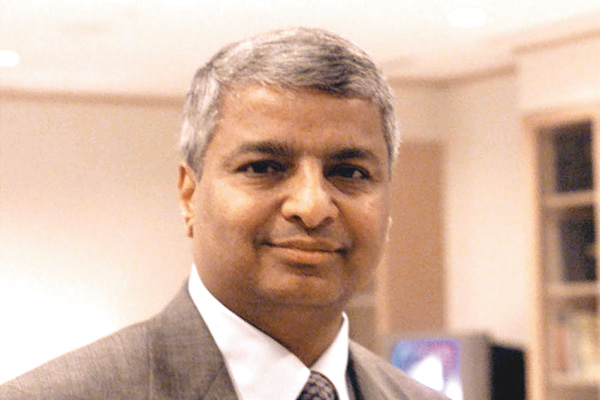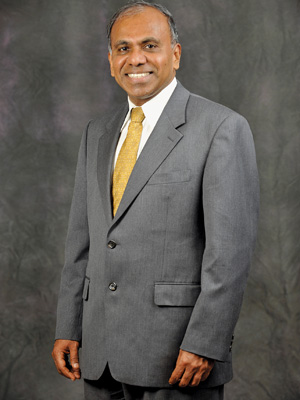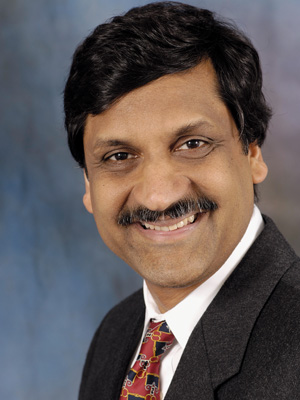
Minds Returning to India
Can Indian-origin scientists in the US help India improve its research and development, and innovation capabilities?
The United States has always been a featherbed for scientists and researchers, irrespective of their origins or nationality. That is because of its unique institutional ecosystem that keeps the ground fertile for creativity, as well as individual entrepreneurship and commercial success. The contribution of these scientists in helping the global superpower keep its nose ahead of any other country in the world — technologically, economically and politically — is significant.
The National Science Board of the US reports that 57 percent of post-doctoral awards in science and engineering in 2006 went to temporary visa holders. Between 2004 and 2007, 89 percent of Indians and 90 percent Chinese who received doctoral degrees in the US, decided to stay back and
pursue opportunities there.
This influx has now resulted in some Indian-origin engineers and scientists leading the charge on innovation in America — which some think is losing competitiveness. Will they help in stronger collaboration and circulation of top-notch minds between the two countries? After all, in the decade up to 2004, US firms increased the number of people they employed in research and development (R&D) outside the country by 76 percent. Many American giants such as GE, IBM and Microsoft now employ hundreds at large research set-ups in India.
As far as the scientific community is concerned, some sort of silent repatriation is already in place in India. But if it is done at a larger institutional level, perhaps India could improve its position in R&D and innovation. The new leaders in the US think it’s both inevitable and desirable.
“We are in very disruptive times,’’ says Anant Agarwal, the new director of the Computer Science and Artificial Intelligence Laboratory (CSAIL) at Massachusetts Institute of Technology (MIT). CSAIL is MITs largest multi-disciplinary lab that engages 900 researchers. “I see many opportunities in countries like India and China that are creating a lot of action and excitement,” says Agarwal, who, besides leading several big-vision research projects in the US, has been a serial entrepreneur starting his first company Virtual Machines in 1993 and the latest, Tilera in 2005.

Gururaj Deshpande, co-chairman, President Barack Obama’s National Advisory Council on Innovation & Entrepreneurship
Entrepreneurship is central to MIT’s philosophy. The combined revenues of companies formed by MIT graduates make the institute the seventh largest economy in the world, according to the latest Kauffmann Foundation report. But the imperatives today are decidedly greater.
“So far, it has been nice to be innovative and entrepreneurial,” says Gururaj Deshpande, serial entrepreneur, philanthropist and co-chairman of President Barack Obama’s National Advisory Council on Innovation and Entrepreneurship. “Now, [the] US has to make everyone entrepreneurial to be economically competitive globally, as opposed to just the top one percent of the population,” he says.
In its outreach, CSAIL has had strong collaborations in China and Taiwan. Its association with Taiwan, particularly with Quantum Computers, has played a significant role in its semi-conductor prowess. “We’d like to [have such collaborations] in India; CSAIL is becoming more global,” says Agarwal. He is hoping business houses like the Tatas and Reliance, and IT companies like Infosys and Wipro will come forward to work with his lab.
 Image:Sandy Schaeffer
Image:Sandy SchaefferSubra Suresh, director, US National Science
Foundation
But there’s a problem. And it isn’t so much the funding, as the availability of human resources. According to the University Grants Commission, the gross enrollment rate in higher education in India is under 15 percent (compared to about 60 percent in the US and Canada). And almost a third of faculty positions in institutions are unfilled, according to the All India Council for Technical Education.
While that may look retrograde, many believe it’ll change, for the better. Subra Suresh, the new director of the US’ National Science Foundation (NSF), whose $6.9 billion annual budget funds research in non-medical areas, says even in the decreasing number of students coming to the US for Ph.Ds in science and engineering, the returnees are conspicuous. “The preliminary trend we are seeing is that they are likely to return to their home country in increasing numbers to pursue research and careers there. This is making countries, including India, much more competitive in scientific pursuits,” says Suresh. He was dean of engineering at MIT before going to NSF and is an alumnus of IIT Madras, as are Agarwal and Deshpande.
Until 2000, says Suresh, the US spent a greater proportion of GDP on non-defense R&D as a country. In 2000, three countries surpassed America: Germany, Japan, and South Korea. More recently, other countries, such as Finland and Sweden, have gone ahead. “So, while the United States remains in a unique position to influence global science and engineering, it must also address ways it can remain competitive,” Suresh says.
One of the ways, he believes, is to bolster collaboration between the US and foreign researchers through NSF’s international science and engineering programmes. In July, NSF signed a memorandum of understanding with the US Agency for International Development to foster cooperation, especially with researchers from developing countries.
India, on its part, thinks Agarwal, will have to rise up to the challenge as it has merely pockets of world class research and a large university system that only focusses on education that is devoid of research. Big science needs big bucks. Both big corporations and the government have put in lot of funding in the US; India can take similar steps, says Agarwal, though his cautionary advice is to put in place a system of meritocracy, “how people get promotions, credits for doing good research and commercialisation”.
“Researchers circulate; if you have role models, they can excite students to stay back,” he said over the telephone on the day he took office at CSAIL.
In some ways, as many multinationals have discovered, Indian researchers provide “highest intellectual capital per dollar”. But as is evident, that is not enough to promote true innovation. If there’s one research strategy that these leaders can nudge India to follow, it should be ‘fund people, not projects’.
(This story appears in the 12 August, 2011 issue of Forbes India. To visit our Archives, click here.)
-
 Dr.a.jagadeesh
Dr.a.jagadeeshExcellent. Dr.A.Jagadeesh Nellore(AP),India
on Jan 2, 2015 -
 Ameera
AmeeraNow Android is more innovative than Apple,Google takes number of people from India and running successfully in India.Apple is going to collapse as early ,just wait and see.Apple will go to the position of Nokia.
on Apr 7, 2012 -
 Jacob
JacobContrary to the previous commenter's views, I think the kind of creative work these people have done in the US, would have been impossible to do in India.
on Aug 5, 2011 -
 Wakjob
WakjobThe only company innovating right now is Apple and guess what? Apple CLOSED its R&D in India in 2006 and still hires mostly American developers in the US. These frauds from India have been cleaning everything else out for 13 years. Bell Labs, the birthplace of UNIX and the C programming lanuage was destroyed by an Indian national named Arun Netravalli. These people are returning home because the US is like a dead carcass they have picked clean and there's nothing left to take.
on Aug 5, 2011















